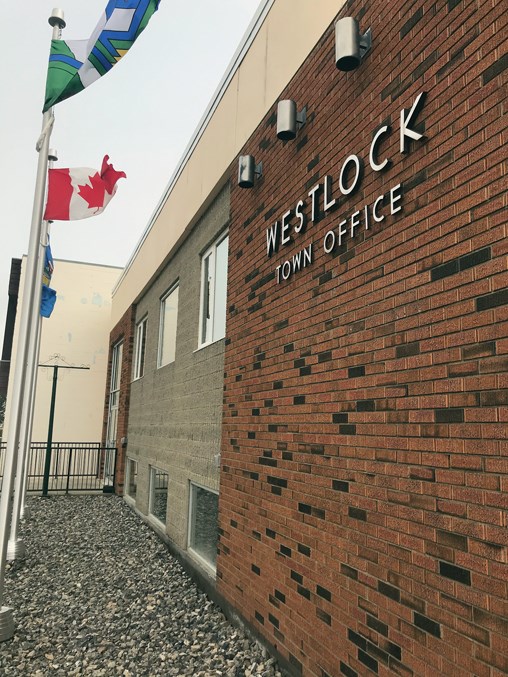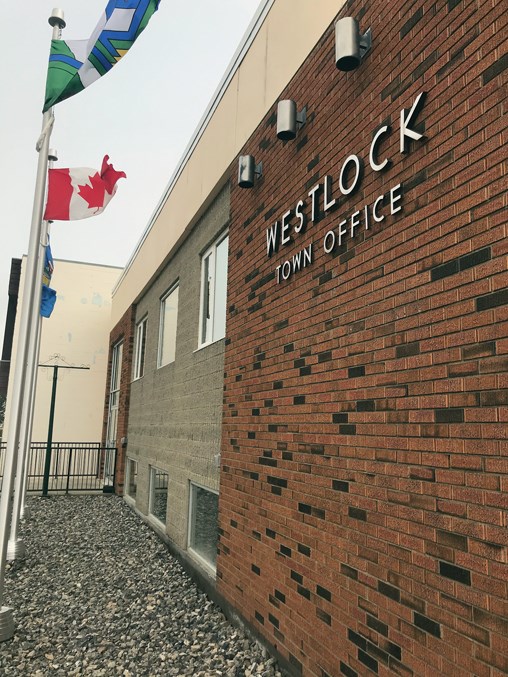 The Town of Westlock, as well as Westlock County, will be receiving less in the way of provincial grants following Budget 2019 released Oct. 24.
The Town of Westlock, as well as Westlock County, will be receiving less in the way of provincial grants following Budget 2019 released Oct. 24.
The 2019 provincial budget outlines significant cuts to municipal funding over the next four years and while local officials are unsure how that will affect their respective budgets they do know more time is needed to estimate the actual impact.
Over the next four years, the government plans to cut expenses by 2.8 per cent ($1.3 billion) in order to balance the budget from a current $8.7 billion deficit estimate to a $584 million surplus by 2022-23, according to the budget released by finance minister Travis Toews Oct. 24 in the Legislature. The expected cut for this year is 0.5 per cent.
While the government is reducing the deficit by cutting expenses, municipalities will be faced with restructuring and re-adjustments, although local officials have yet to discern which cuts affect their respective municipalities.
“There will be some changes, we’re hoping that once we’ve had the time to look at it and administration has had the time to look at it we’ll have a better idea of where we’re going, but it’s a little early yet,” said Westlock County reeve Lou Hall.
One of the main sources of capital funding for municipalities is the Municipal Sustainability Initiative (MSI). For 2018-2019, Westlock County received upwards of $4 million and close to $2 million went to the Town of Westlock.
While funding levels remain similar to previous years in 2019-2020, the provincial government will introduce cuts to the program starting in 2020-21, reducing MSI funding by $94 million and another $142 million in 2021-22, a nine per cent cut over three years.
MSI will be replaced by a Local Government Fiscal Framework in 2022-23, with a base pool of $860 million. Since the new framework also replaces the former initiative to separate the cities of Edmonton and Calgary under the City Charters Fiscal Framework Act, only $405 million will go to municipalities outside those two. Significantly, the transfer payments will grow at half the rate of provincial revenue growth.
“Provincial support of municipalities (in Alberta) has led the average … in the country. We were elected on a platform to get a budget under control. This budget is doing it in a very practical way over a period of time. We cannot continue to move in a direction of further deficits and higher debt and think that that’s going to be helpful in the future,” said Athabasca-Barrhead-Westlock MLA Glenn van Dijken.
“What we’re indicating is that (municipalities) have an understanding moving forward of what the province is able to help finance with them, and that they will be making decisions based on that.”
Although local officials were cautious to comment in detail, the Alberta Urban Municipalities Association expressed disappointment at the new fiscal framework for municipal funding which will fail “to address the long-term infrastructure needs of Alberta’s communities.”
“While the province reduces its budget by 2.8 per cent over the next four years, it has proposed reducing our infrastructure funding by almost 10 times that amount. With municipal governments currently facing a multibillion-dollar infrastructure deficit, these funding cuts will lead to crumbling community infrastructure or higher taxes for property owners for years to come,” said AUMA president Barry Morishita in a release.
“You will never convince me that you can save money by not maintaining the stuff you own. And that’s infrastructure. Not maintaining something always costs you more,” said Westlock mayor Ralph Leriger regarding infrastructure funding.
“Our provincially-owned Highway 44 is a perfect example. It has been overlooked for so long now, it’s deteriorated past the point of easy repair. The overlay that was put on in July is already failing. Anyone who’s involved with the provincial government at any level should be ashamed with the condition of the highway through our town.”
van Dijken, on the other hand, finds Morishita’s representation to be inaccurate. According to the MacKinnon Report, he said, Alberta has some of the newest infrastructure in the country.
“I don’t think we’re going to see crumbling infrastructure. To make that claim would be then to say that infrastructure is crumbling through this country … Our move to reduce our capital plan from $7 billion to $6 billion will put us in line with other jurisdictions. We’re matching their spending and we’re already newer and better. I don’t see it crumbling,” he said.
MSI is only one of the available avenues of funding for small municipalities, and the impact of this reduction is yet unclear to local governments. As Hall suggested, some cuts will affect some municipalities more than others.
But there are other areas of the provincial budgets which might cause a reduction in the availability of funds for municipalities.
During the blue ribbon panel’s deliberations on the provincial budget, a $1 million Alberta Environment and Parks Community Resilience Program grant to the town for a stormwater pond was put on hold late April, despite the previous NDP government releasing it March 12.
Currently, Leriger says the town has received “good indication” in the form of conversations with provincial ministers and van Dijken that they’ll receive the money, but no contract has been signed yet.
The Community Resilience Program will end in 2020-21, however. It is programs like this which form other revenue sources for municipalities to fund specific projects. According to the budget, historical data on municipal grants shows that about half of the money for infrastructure projects comes from MSI and another half from other grants. Of a total $3 billion spent in 2017-18, for example, approximately $2.75 billion in grants were classified as “other,” not MSI.
“We’ll do a detailed analysis of (the budget). I think we were expecting a budget that would show some restraint and that’s certainly what we see. It’ll be my job and council’s job, and our administration to sift through there and find what opportunities exist for our community,” said Leriger, adding that “the devil is in the details.”
“The last thing we want to do is have to make adjustments to taxes,” said Hall, but according to AUMA this is certainly a possibility.
Overall budget
The projected 2.8 per cent cut over four years is contingent on at least two pipelines getting built over the same time period.
Toews suggested that without Line 3 being active by the first quarter of 2021, and Trans Mountain by the end of 2022, cuts to provincial budgets could be as deep as $3 billion.
The government is also promising a reduction in corporate tax from 12 per cent under the previous government to eight per cent over the next four years — it has already been reduced to 11 per cent.
The argument is that a low corporate tax makes Alberta a competitive business environment, and any additional revenue from the tax cut can be spent on hiring more people.
“I believe that investment will come back to our jurisdiction when they recognize that they have a government that will work with them into the future. The main goal of the budget is to strengthen the economy and return jobs,” said van Dijken.
The size of the public sector will also be reduced by 7.7 per cent over four years, meaning job cuts and hiring restraints across the board.
Education funding will remain the same over the next four years for K-12, but the government is working on a new framework for September 2020 in light of enrolment growth.
Advanced education expenses are expected to drop 12 per cent over the next four years, mostly from a reduction of Campus Alberta Grants. Instead, funding will be reallocated toward the skilled trades.
“The plan is focused on delivering skilled people for the needs of the province. We bring in people from all over the country for skilled trades. So let’s develop those people at home,” said van Dijken.
The province is expecting to quadruple the number of student and full-time apprentices by 2023, spending $4.3 million for 6,000 positions through CAREERS the Next Generation. Another $10 million will go to fund Women Building Futures.
Community and Social Services will see an increase of 7.6 per cent over four years, with more money going to disability services and Alberta Income for the Severely Handicapped (AISH). The latter is being de-indexed, however, meaning it will no longer rise with inflation.
The government is also maintaining funding for Children’s Services and Seniors and Housing.
Agriculture and Forestry will be reduced nine per cent this year, 15 per cent by 2023, with most of the cuts coming from climate change initiatives and insurance programs. Also suffering cuts are Culture, Multiculturalism and Status of Women (down to $158 million from $236 million by 2023), and Economic Trade, Development and Tourism — in 2021, the province plans to reduce it to $277 million from $349 million in 2018-19.
The deficit reached peak levels of $8.7 billion this year (compared to 2018-19 levels of $6.7 billion) in part due to a $1.5 billion initiative to end the crude-by-rail program put in place by the previous government to move oil in the absence of the Trans Mountain pipeline.



